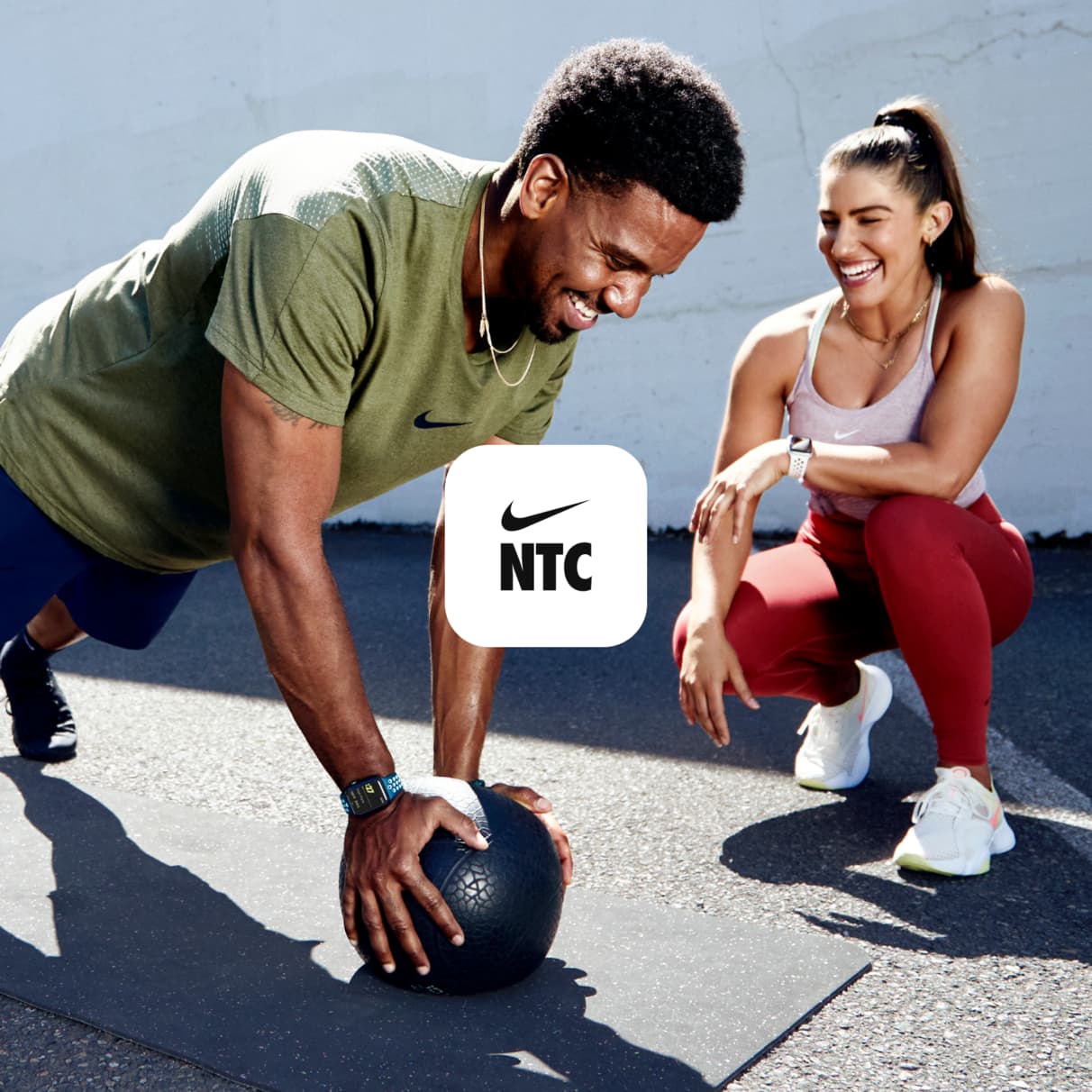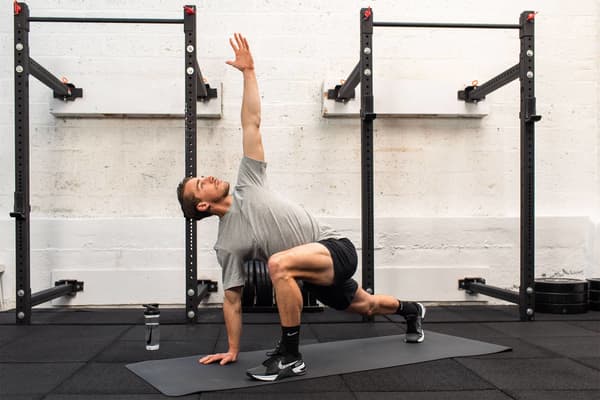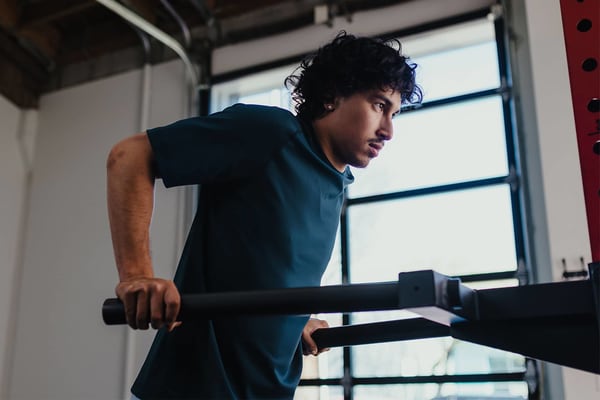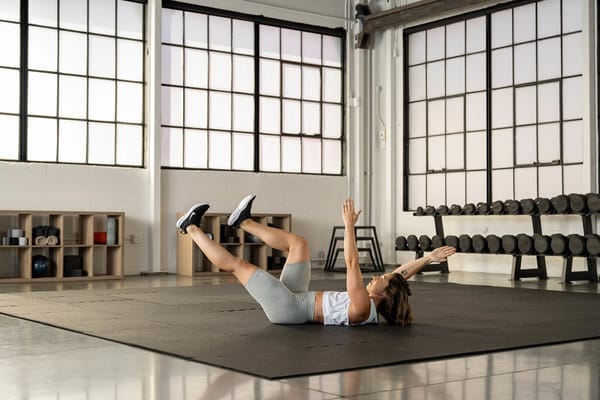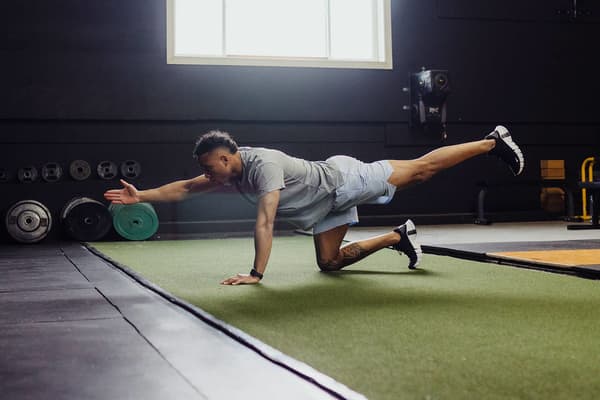7 Trainer-approved Plank Variations To Try
Sports & Activity
Certified personal trainers share their go-to variations of planks that can strengthen your core, upper body and lower body all at once.
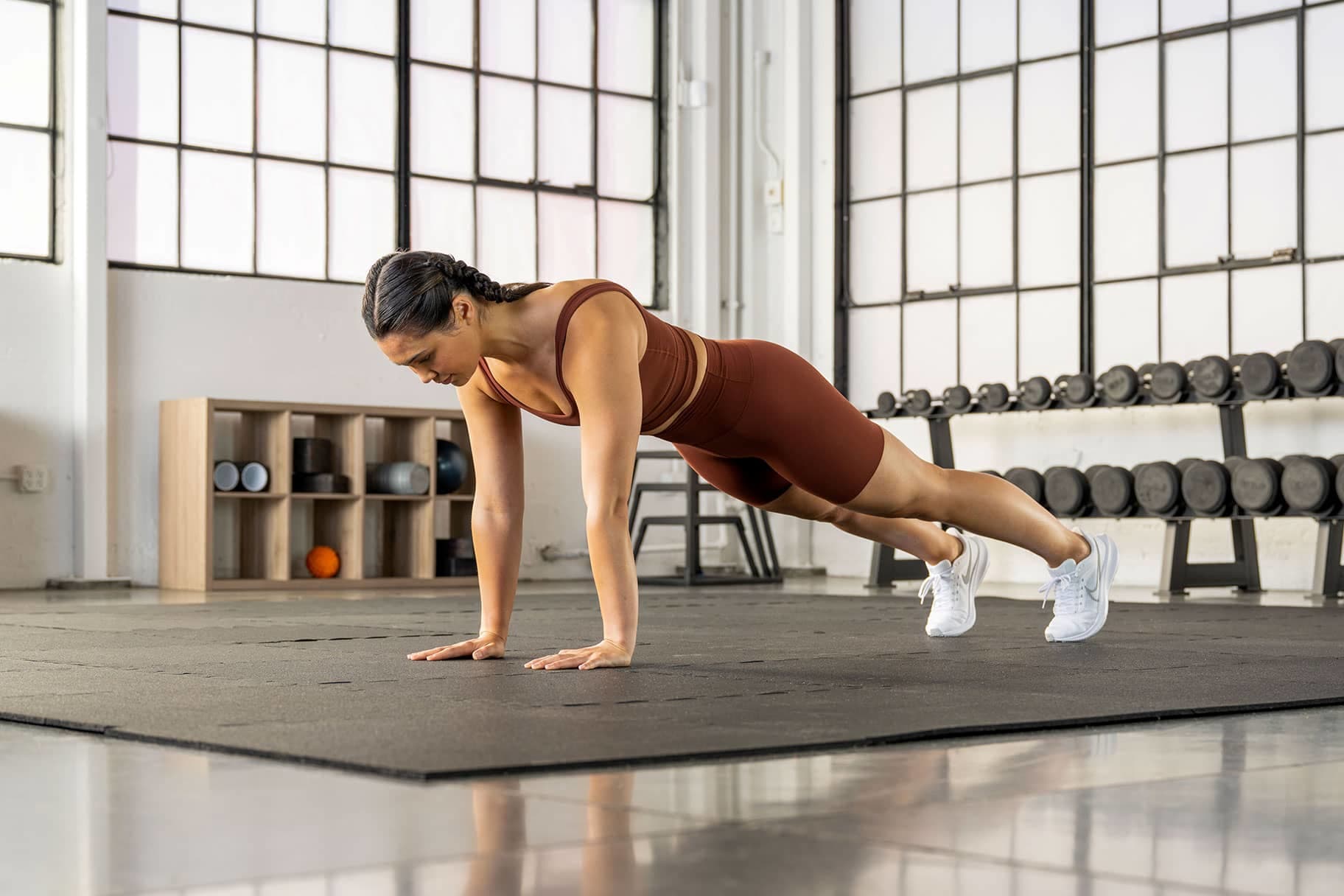
How To Master Proper Plank Form
Pierre said to imagine that there’s a thread attached to your spine in between your shoulder blades and that it’s permanently being pulled so that the upper spine is in the proper position (a great cue is thinking about lifting your spine to the ceiling). For the feet, she said your heels should be in alignment with the base of the foot to engage the quadricep muscles more. To achieve this position, think about extending the foot by reaching your heels to the back wall.
Alemar also recommended focusing on maintaining a pelvic tilt when performing the traditional plank and avoiding allowing the hips to dip or the spine rounding or curving.
And, don’t forget to breathe. “Be mindful not to hold your breath and think about flexing your abs while simultaneously breathing behind that tension,” he said. Admittedly, this might feel a bit weird the first time you try it, but according to Alemar, it will allow you to hold a plank for longer periods of time.
Plank Variations Trainers Love
Ready to add planks into your routine? Alemar and Pierre share their favorite plank exercises.
1.Plank on Knees
If you’re new to planking and can’t hold a traditional plank for 30 seconds, performing planks on your knees is a great place to start, Alemar said. Starting with this variation will allow you to get acclimated to the movement and learn and reinforce proper movement patterns.
- Start by lying on your stomach with your hands slightly outside your chest.
- With control, push through the palms of your hands as you extend your arms. Be sure to engage your core and maintain a neutral spine.
- If you want, lift your feet off the ground to balance on your knees.
- Hold for 15 seconds. If you’re more advanced, hold for 30 seconds.

2.High Plank
This is one of the most popular plank variations and rightfully so. This variation places a greater emphasis on the pectoral and serratus muscles, Alemar said. When performing high planks, make sure your wrists are in line with your shoulders or slightly behind to further engage the serratus muscle.
- Start by lying on your stomach with your hands slightly outside your chest and your toes tucked.
- With control, push through your hands and feet, lifting your entire body off the ground simultaneously. Be sure to engage your core and glutes. Your head, spine and legs should be in a neutral position. Your shoulders, elbows and wrists should also be aligned.
- Be sure not to round or arch your back and to keep the palms of your hands flat on the ground.
- Hold for 15 seconds. If you’re more advanced, hold for 30 seconds.

3.Side Plank
This plank variation is excellent for developing stability in your spine while also challenging the hips and obliques, Alemar said.
- Start lying on your side with your body in a straight line from head to toe.
- Depending on your ability, you can either place your forearm on the ground or your hand. If you’re placing your forearm on the ground, make sure that your elbow is in line with your shoulder. If your hand is on the ground, make sure your hand is underneath your shoulder.
- With control, push through your forearm and hand as you simultaneously lift your hips off the ground.
- Your body should be in a straight line from head to toe and your full hand or forearm should be on the ground. Be sure to engage your core and squeeze your glutes.
- Hold for 15 seconds on each side. If you’re more advanced, hold for 30 seconds on each side.

4.Reverse Plank
If you’re bored with your current ab routine, take it to the next level with reverse planks, which not only target your core muscles, but also the glutes, hamstrings and lower back.
- Start seated with your legs bent and your hands behind your glutes with your fingers pointing towards your feet.
- From here, extend your legs, keeping your heels on the ground.
- With control, push through your hands as you lift your glutes and legs off the ground.
- Keep your chin in a neutral position and squeeze through your glutes to maintain proper form.
- Hold for 15 seconds. If you’re more advanced, hold for 30 seconds.

5.Plank Kick Through
Ready to challenge yourself? Try adding plank kick throughs to your routine. This movement is dynamic, and will challenge your core, arm, oblique and hip strength while generating heat throughout your body, Pierre said.
- Start in a traditional high plank position.
- With control, begin to shift your weight to the right side of your body as you rotate to the right, bending your left leg at the knee and lifting your left hand off the ground while simultaneously extending the right leg across the body.
- With control, return to the starting position, then repeat the same movement on the opposite side.
- This counts as one rep. Perform 10 reps.

6.Superman Plank
This plank variation is excellent for all levels, Pierre said. It will challenge your stability in addition to your core and can always be regressed if necessary.
- Start in a traditional high plank position.
- With control, simultaneously raise your left hand off the ground and extend it out in front of you as you lift your right toes off the ground. The leg being lifted does not need to come more than a few inches off the ground. Be sure not to shift your weight to the left or right side of your body.
- With control, place the left arm and right leg back down, returning to the starting position.
- Repeat on the opposite side.
- This counts as one rep. Perform 10 reps.

7.Plank to Squat
If you like more dynamic, diverse movements, consider adding this variation into your routine. It hits all the muscles a traditional plank would in addition to stretching and opening the hips and activating the glute muscles.
- Start in a traditional high plank position.
- With control, either walk or gently jump your feet to the outside of your hands coming into a squat. You can lift your hands off the ground to make the movement more dynamic.
- With control, gently jump or walk your feet back to a high plank position.
- This counts as one rep. Perform 10 reps.

How To Add Plank Exercises To Your Exercise Routine
So, are you ready to add some new core moves to your routine? Alemar said the best way to implement planks to your exercise regimen is to choose two variations (ideally beginner-friendly unless you have experience planking), such as a forearm plank and side plank, and perform three sets of each for time. The time can vary, for example, 10 seconds or 30 seconds — choose what challenges you, but don't sacrifice the integrity of your form.
If it’s difficult to hold a plank for 30 seconds, Alemar said to modify the movement to your knees when applicable, or, hold for a shorter period of time. Once you’re able to hold a plank for 30 seconds and perform three sets, Alemar said to increase the amount of time you're holding the plank by 10 seconds increments until you can hold it for one minute. From there, he recommended beginning to progress to more challenging variations.
The beauty of designing training programs is that there are a variety of ways to achieve the same end goal. Pierre likes to do plank work in the warm-up portion of a workout to get the core activated, to start building heat throughout the body, and in general warm up your body.
Alemar suggested adding planks between other compound movements — movements that work multiple muscle groups at once — as the third or the fourth exercise. For example, you could perform a set of squats, then a set of rows, followed by a forearm plank.
It’s important to note that in order to train your core effectively, you should also perform other types of core-strengthening exercises that target the other muscles in your core — in addition to adding dynamic, rotational and anti-rotational movements into your routine.
Like any other type of exercise, it’s important not to overtrain your muscles, and Alemar recommended performing core-specific movements two to three times a week.
No matter which type of plank variation you decide to do, don’t forget your form. Your shoulders, wrists and elbows should be aligned and you should maintain a neutral spine (lower that booty!).
Words by Tamara Pridgett
